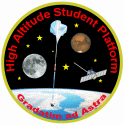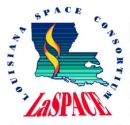



Payload 06 Information
Payload Flight Number:
Institution:
Payload Title:
SDSMT / Sanford Underground Research Facility (SURF)
Student Leader:
Faculty Advisor:
Payload class:
Small
Payload ID Number:
06
Mass:
Current:
Serial Downlink:
Analog Downlink:
Serial Commands:
Discrete Commands:
Payload Specification & Integration Plan
Due: 06/22/2018
Delivered:
Payload Integration Certification
Scheduled: 07/27/2018
Actual:
Flight Operation Plan
Due: 07/19/2018
Delivered:
Final Flight / Science Report
Due: 12/07/2018
Delivered:
Abstract:
The primary objective of this project is to design a cosmic ray detector capable of measuring primary cosmic ray particles first in a standard weather balloon, then in HASP, and ultimately, in a CubeSat mission. The ionizing particles that are caught in the Earth’s magnetic field and bombard the upper atmosphere effect everything from weather to electronics on board aircraft. Understanding the particles and their reactions with the atmosphere are important. When solar activity is at a minimum, as it is currently, a greater portion of the primary particles come from outside the solar system. These galactic cosmic rays can be as heavy as iron and range to higher energies than particles in the solar wind. They are quite interesting scientifically. The payload under development by the Sun Catchers team is modeled after the Cosmic Ray Telescope for the Effects of Radiation (CRaTER) experiment on the Lunar Reconnaissance Orbiter (LRO) mission [1]. The South Dakota Catching Rays payload will consist of two silicon diode detectors, one thin and one thick, configured as a telescope. In addition to the silicon telescope, the payload will also contain a Geiger counter for detecting secondary gamma rays, and sensor data that records atmospheric conditions.
Payload Application:
06_SDSMT_Application_Review_Response.pdf 08_SDSMT_HASP2018_Flight_Application.pdf
Payload Integration Plan:
|